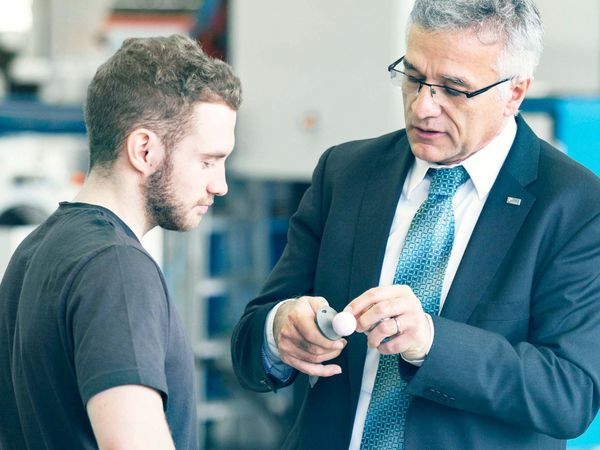Efficient machining of high-performance solid carbide tools.
Machining with geometrically defined cutting edges, is in many cases, one of the last processing steps in the component manufacturing value chain. It is therefore particularly important that the deployed tools deliver high quality – ensured through optimized grinding processes – and guarantee sufficient process stability when in use.
The process chain for manufacturing solid carbide cutting tools, starting from sintered carbide blanks, consists of grinding, edge preparation, coating and subsequent finishing. Diamond grinding tools are used for grinding carbide tools, although the high hardness of the workpieces means that even these tools are subject to wear.
Automatic grinding wheel measurement for more efficient production
Wear on the tool - the grinding wheel – is regularly corrected to ensure the correct geometry of the ground workpiece. Normally, the machine operator manually corrects the grinding wheel data as part of the production process, drawing on the current tool geometries to maintain the desired geometric tool dimensions. With automatic grinding wheel measurement – for example on the WALTER HELITRONIC VISION 400 L – the wear of the grinding wheels can be determined automatically by tactile measurement, precisely documented and compensated. The measurement is performed during the production process.
Maximize feed rates
The load on the grinding tool varies depending on the contact ratio, and it would be very difficult for you as the user to manually adjust the optimal maximum load – and yet the maximum use of the grinding tool's potential is also a prerequisite for minimizing cycle times.
The solution: the "Feedrate Optimizer" as an extension of HELITRONIC TOOL STUDIO offers ideal possibilities for feed regulation and control of wheel and machine load. First, a progressive simulation analysis determines the profile of the wheel load. The feed is then optimized so that the wheel load remains constant throughout the entire machining path. Depending on the type of tool, the time saving can total up to 30%.
These are two examples of how WALTER can help you optimize your tool production. Your contact at WALTER can help you with additional tips and solutions for optimization.






